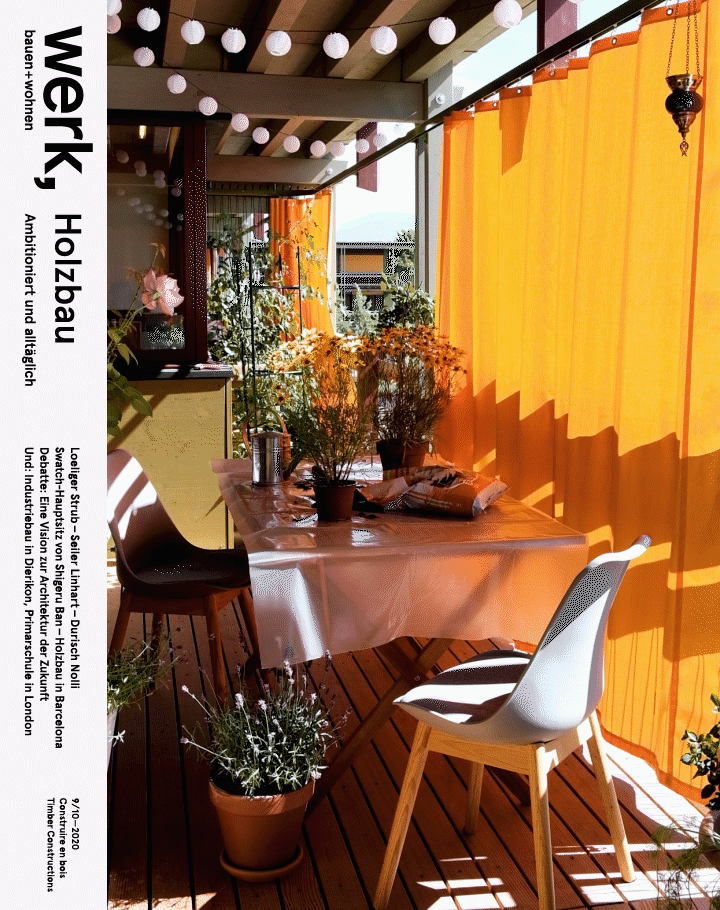werk, bauen + wohnen 9/10 – 2020

At Home in Timber Construction
An efficient industry, a world of specialist planners, widely usable, reasonably priced products and construction methods and, not least importantly, supportive fire protection standards were still missing: but by taking a close look at architecture from the inter-war period the «new Swiss» building with timber from the 1980s created iconic works, which for a long time told us more about the possible poetics of timber building than about the generalizability of their technology. Among the pioneers were Herzog & de Meuron, Peter Zumthor, Rolf Mühlethaler, Burkhalter Sumi, Meili Peter, and Gion Caminada with his reinterpretation of traditional log building methods.
The formal innovations often related to the location far from the city — in many cases timber expressed a relationship to nature. Today timber is part of the everyday world and has been for some time. Good building with timber requires specific knowledge of the material and this in turn calls on architects to exercise discipline in designing. As timber building is not always inexpensive, it must offer unmatched additional value, otherwise concrete, brick and steel are more economical alternatives.
The decision to build with timber is made by those who want to use a CO₂-neutral building material and to keep an eye on local materials cycle but also by those who are searching for possibilities of expression, the warmth and authenticity of this building material from nature, and, not least importantly, by anyone with an interest in innovative construction at the limits of what is feasible — often in a more modest way.
But anyone who wants to attract attention with timber building must aim for superlatives: the biggest housing block, the tallest highrise, the widest spans, or the most complicated structure. However, this is not of itself innovative. Innovation comes more from the timber industry, especially from smaller businesses. In much the same way as frame element construction started its triumphal march some time ago, today this position is taken by construction methods such as CLT that has spread throughout the world as a homogeneous, non-dimen-sional mass, or, conversely, solid timber construc-tion without the use of adhesive or nails, like the building system from Küng.
In this issue we document the current wide spectrum: urban housing in Barcelona; a sports centre in the mountains; a housing development in the country and a company headquarters in a business zone — but a building of superlatives has not been forgotten, either. — Daniel Kurz, Tibor Joanelly